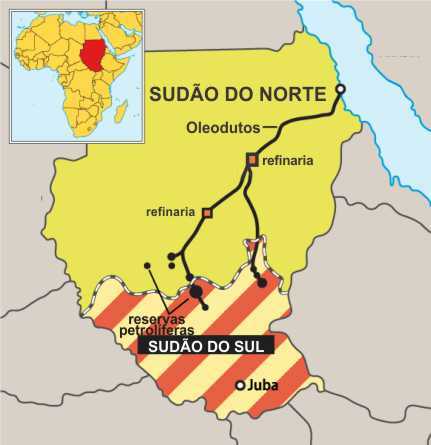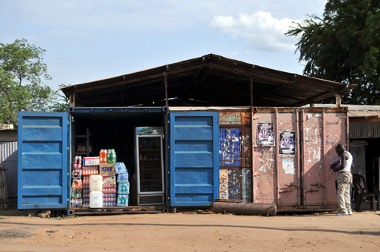In February 2011, the population in Sudan – a country located in the northern region of Africa – went to the polls to define, in a referendum, the separation and emancipation of the region in the southern portion of the country. With the approval of an overwhelming 98.8% of voters, the newest country, until then, emerged: the Southern Sudan, having as capital the city of Juba.
Despite the intense celebrations in the streets, it was not long before the population realized that there was a lot little to celebrate, as the new country was born with serious social upheavals and heavy challenges to face. To make matters worse, conflicts with neighbors to the north were resumed due to uncertainties in the establishment of borders between the two countries, which dispute regions rich in oil.
In short, it can be said that a civil war (so far the longest in Africa), instead of ending, was only transformed into an international conflict.
Like most of Africa, Sudan's borders were artificially defined by the Western powers during the process of establishing colonialism. Thus, since Sudan's independence from the United Kingdom in 1956, the country has been in deep political crises, which have led to a series of civil wars.
For the solution of an armed conflict that had dragged on for 12 years - and also due to the great international pressure - they were agreements established in 2005 in the city of Nairobi, Kenya, where it was decided by the 2011 referendum, which culminated in the separation.
The difference between the two territories is latent both in physical aspects and in ethnic composition. The north is mostly composed of desert regions (except the valley through which the River Nile passes), with scarcity of water and natural resources, while the south has a greater amount of vegetation and wetlands. Furthermore, South Sudan is basically composed of Christian and animist peoples, who did not accept the political and legislative domination of the peoples of the North, with an Islamic majority.
Despite these ethno-cultural differences, the reason for the existence of conflicts is fully centered in the dispute for natural resources, mainly oil, the product of which the two countries are dependents. In this regard, there is an interdependence in the use of this natural resource, which needs greater political stability to maintain itself. Look at the map below:

Map of Sudan and South Sudan Strategies, Divisions and Resources
Do not stop now... There's more after the advertising ;)
We can observe that a large part of the oil production in the region is held by the peoples of South Sudan, who, however, need the oil pipelines located in Sudan to transport their production. In addition, there is the dispute for the Abyei region, claimed by the two countries and rich in oil reserves.
Living conditions of the people of South Sudan
Due to the colonial heritage and the armed conflicts that have been perpetuated in the region since the end of English colonization, the South Sudan's population, despite celebrating the country's recent independence, has been experiencing major economic and social.
Data are scarce, but not encouraging. More than 70% of the population is illiterate, a number that rises among women. Infant mortality rates are also high and the number of mothers who die in childbirth is high. It is estimated that approximately 45% of the population does not have access to any source of drinking water. The population suffers from the lack of hospitals – which in most cases offer poor structural and hygiene conditions – and from the low number of health professionals.
To aggravate the situation, the war and the constant bombings - mainly in the border regions - intensify the death toll and refugees, in addition to causing the southern government to invest nearly 50% of the country's wealth in weapons at the expense of investments in education and health.

Small warehouse in the capital Juba. Informal trade is predominant in the country*
Movements organized by the population accuse the Sudanese government of using food as a "weapon of war", cutting off its supply or attacking humanitarian organizations such as Médecins Sans Frontières, which make constant announcements about the dire situation that prevails in most of the two countries in conflict.
Despite recent agreements, as well as efforts by the UN and some neighboring countries, such as Nigeria and Angola, the differences between the two countries seem to be far from the end, as well as the socioeconomic crisis and the conditions of misery that plague most of the population.
_______________________________
* Image credits: Frontpage and Shutterstock
By Rodolfo Alves Pena
Graduated in Geography



